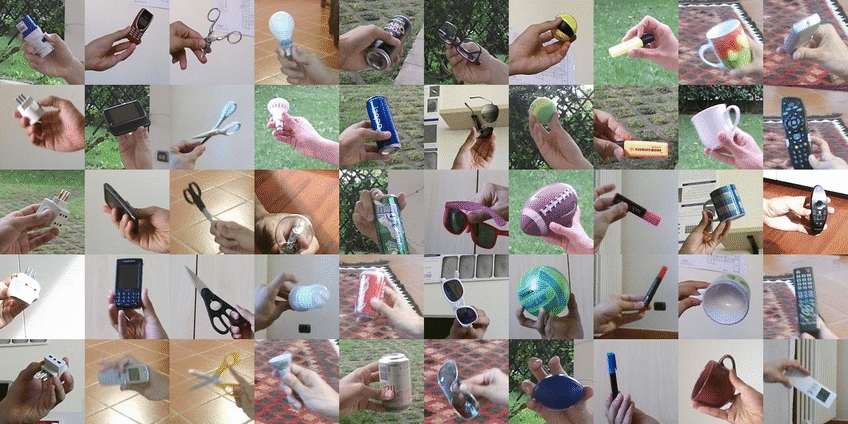CS 5043: HW4: Convolutional Neural Networks
Assignment notes:
- Deadline: Friday, March 15th @11:59pm.
- Hand-in procedure: submit to the HW4 drop box on Canvas.
- This work is to be done on your own. While general discussion
about Python, Keras and Tensorflow is encouraged, sharing
solution-specific code is inappropriate. Likewise, downloading
solution-specific code is not allowed.
- Do not submit zip or MSWord documents.
Data Set
The Core50 data set
is a large database of videos of objects as they are being
moved/rotated under a variety of different lighting and background
conditions. Our task is to classify the object being shown in a
single frame of one of these videos.

Data Organization
- A subset of the database is available on MLFDS in
/home2/fagg/datasets/core50
- The database is partitioned into different conditions (s1, s2,
...)
- Within the condition, you will find cans (o21 ... o25) and mugs
(o41 .. o45), each contained within their own directory
- Within each object directory is a sequence of PNG files. The
last number of the file name is the image sequence number
- Each image is 128 x 128 in size and is color (Red, Green, Blue channels)
- I have provided a hw4-skel.ipynb file (/home2/fagg/notebooks)
that contains the procedure for loading sets of images and
constructing a data set for training.
Prediction Problem
We will focus on the distinction between mugs and cans, for which we
only have five distinct example objects (though, for each, we have many
different perspectives and conditions). Our goal is to construct a
model that will be generally applicable: ideally, it will be able to
distinguish any mug from any can. However, given the
small number of objects, this is a challenge.
-
Primary Problem: Train/validate on the same set of
objects (all 5), but different conditions. Training should involve
most of the conditions, but validation must include at least three
conditions.
-
Bonus Problem: Train on four objects; validate on one object.
Use all of the conditions for both.
- We will not be doing cross-validation rotations for this
assignment. As such, it is probably possible to carefully
select objects and conditions for your training/validation data
sets that will work well for a given model. You should stay
away from this level of tuning.
Architecture
You will create a convolutional neural network to distinguish the mugs
and cans.
Here is my current state:
- Three 5x5 convolutional filters with 2x2 strides (I am playing
variably with max pooling)
- Flatten
- Two dense hidden layers with elu activation.
- Single-output sigmoidal layer.
Since we are at the limits of data, it is important to take steps to
address the overfitting problem. Here are the key tools hat you have:
- Use as large a training set as possible (gives us variety),
but use stochastic mini-batches to reduce the computation for a
single training epoch step. Note that using more than every
5th image probably doesn't buy us much (compared to the memory usage).
- Regularization
- Dropout
- Keep the number of parameters small (right now, I am sitting
around 200K)
Hints / Notes
What to Hand In
Hand in your notebook containing all of your code + the PDF export of
this notebook. This notebook must include:
It is fine if you want to hand in separate notebooks for the primary
and bonus problems.
Evaluation
- 25 pts: Selection of proper training/validation data sets (following the
constraints above)
- 50 pts: Model generation code. Is it correct? clean? documented?
- 25 pts: Model performance. Note that for this to count you must have
an AUC of at least 0.6 for both the training and validation
data sets
- 10 pts: You solved the bonus problem
andrewhfagg -- gmail.com
Last modified: Thu Mar 7 13:51:44 2019

